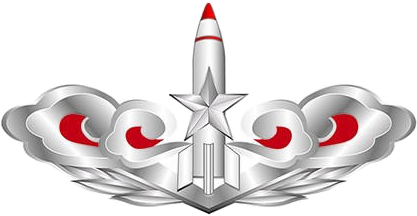Chinese -Emblem_of_People's_Liberation_Army_Rocket_Force.png

In 2010, the U.S. issued the 2010 Nuclear Posture Review of U.S. nuclear policy. This review linked China and Russia as potential major threats and provided detail of the U.S. development of missile defense systems and conventional prompt global strike (CPGS) systems. CPGS systems are under development which are intended to deliver airstrikes with conventional weapons to anywhere on the globe within one hour. The review placed a premium on reducing nuclear weapons and even suggested that the U.S. and China were mutually vulnerable.
The 2010 NPR caused concern in some Chinese circles because they felt that it indicated that the U.S. was trying to attain absolute security at the expense of both China and Russia. They believed that the U.S. was looking to dominate both countries with the threat of the CPGS and the missile shield.
Now the 2018 NPR has changed the emphasis for U.S. nuclear policy to a focus on nuclear weapons including low-yield nuclear warheads. The Chinese are still concerned about the possibility that a U.S. missile shield could prevent a Chinese retaliatory strike following a U.S. surprise attack. The interest in low-yield warheads supports the Chinese concern that it may weaken the U.S. policy of “no first strike.”
There have been media reports that China is dedicating billions of dollars to AI research across a broad range of potential applications including military. Currently they have a special focus on unmanned AI for surveillance and aiding policing activities and counterterrorism activities. There is no indication that the Chinese are actively working on integrating AI into nuclear weapons systems.
Nuclear weapons systems include early warning, decision support systems, tracking and targeting, simulation, discrimination, and missile defenses. AI includes machine learning, autonomous systems and other capabilities all of which could be useful for improving nuclear weapons systems. The Chinese 2015 Military Strategy document emphasized the need for rapid response. Considering the increasing volume of information that needs to be processed by military sensor systems these days, AI systems could be critical for quickly evaluating threats.
China is very concerned about the possibility of a sudden attack by a nuclear armed adversary such as the U.S. China is working hard to counter new developments in the U.S. and Russia nuclear arsenals with improvement of their own nuclear weapons systems. Chinese nuclear policy is flexible and their “no first use” of nuclear weapons policy should not be though of as carved in stone. They will respond to changing nuclear capabilities by considering changes in their nuclear policy.
There is no clear understanding of how and when China might integrate AI into their nuclear weapons systems. One big problem is the possibility that AI systems could be hacked, and nuclear weapons systems rendered unreliable or inoperative. It is also possible that AI systems could be attacked and caused to issue a false alert for a non-existent attack. This is part of the motivation to develop quantum encryption for military communication and data transfer.
While the Chinese are interested in the application of AI systems to military systems, there are also strong calls for the inclusion of human beings in the chain of detection of and response to perceived threats. However, the time required for analysis and response is steadily shrinking and there may not be time for human beings to be involved in such decisions.